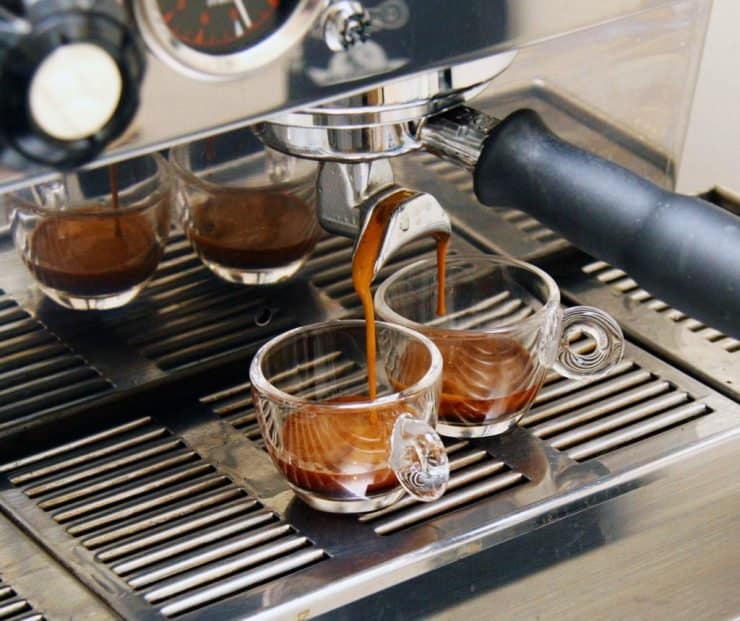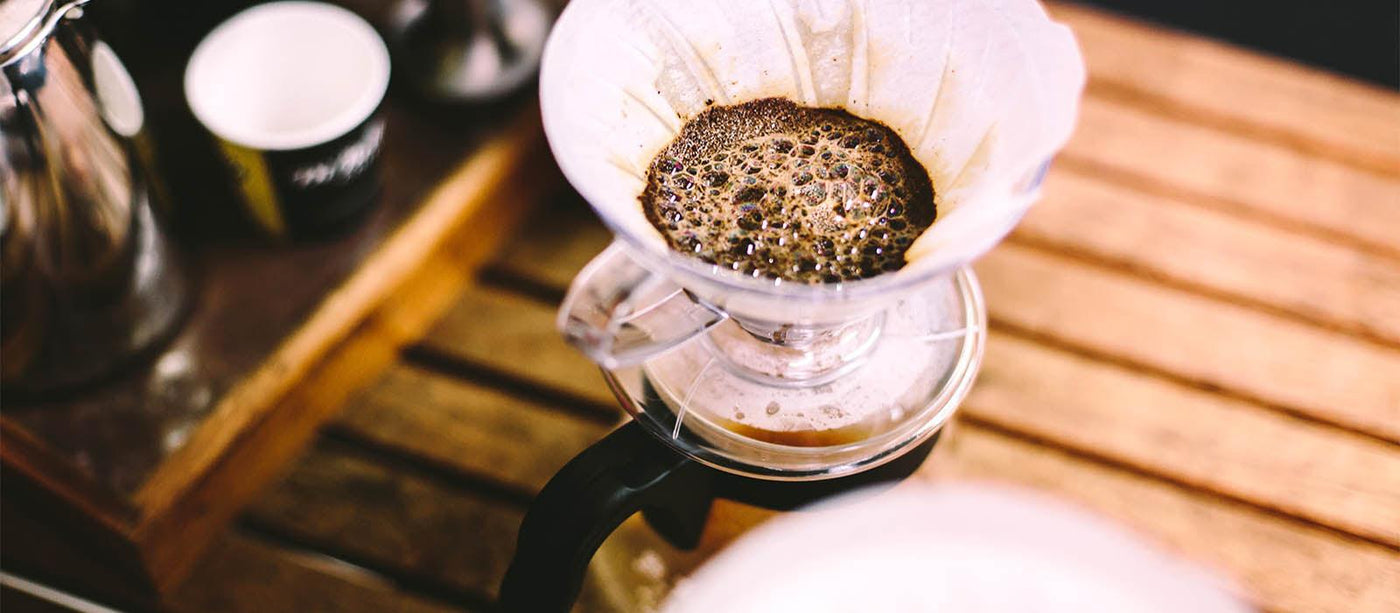Finding the Art of Coffee Brewing Methods: Tips for each Lover
Finding the Art of Coffee Brewing Methods: Tips for each Lover
Blog Article
Discovering the Art of Coffee Brewing: A Comprehensive Guide to Developing Your Cup
The art of coffee developing is a multifaceted self-control that combines science with individual expression, where the selection of beans, water quality, and brewing techniques merge to produce a polished sensory experience. Understanding the nuances of different coffee beans, especially the distinctions between Arabica and Robusta, is necessary for any kind of aficionado. The option of appropriate equipment and careful focus to developing criteria can significantly affect the final result. As we check out these aspects, one must think about exactly how even minor changes can bring about extensive adjustments in taste and fragrance-- what might these modifications reveal about your perfect cup?
Comprehending Coffee Beans
To really appreciate the art of coffee brewing, one must first comprehend the foundational component: coffee beans. These small seeds, normally stemmed from the Coffea plant, are important in figuring out the flavor account, fragrance, and general quality of the made drink. Coffee beans primarily drop right into two categories: Arabica and Robusta. Arabica beans, recognized for their delicate tastes and greater acidity, are often preferred by connoisseurs. In comparison, Robusta beans have a stronger, more bitter preference and higher high levels of caffeine content, making them suitable for coffee blends.

In addition, the handling approach-- whether washed, all-natural, or honey-- impacts the beans' final taste. Recognizing these elements enables brewers to choose the best beans that align with their chosen flavor account, inevitably boosting the coffee developing experience. coffee brewing methods. This understanding is important for any individual aiming to understand the craft of making the excellent mug of coffee
Developing Approaches Explained
Many enthusiasts find that the choice of brewing method significantly impacts the final taste and fragrance of their coffee. Each approach uses various removal methods, affecting the coffee's character and richness.
Drip brewing, among one of the most prominent techniques, utilizes a maker to leak hot water through ground coffee, producing a tidy and regular cup. French press, on the various other hand, submerses coffee premises in hot water, permitting a fuller body and even more durable flavor, as oils and fine fragments continue to be in the mixture.
Pour-over brewing offers a meticulous strategy, where water is by hand put over coffee grounds, permitting specific control over removal time and temperature, resulting in a nuanced and bright mug.
Espresso, a concentrated coffee made under pressure, is recognized for its strong taste and velvety structure, working as the base for numerous coffee drinks, consisting of cappucinos and cappuccinos.
Vital Equipment Required
What devices is essential for making a wonderful mug of coffee? The structure of any effective coffee brewing procedure lies in quality tools tailored to your recommended technique. To start with, a trusted coffee mill is important; fresh ground beans substantially enhance flavor and fragrance. Choose for a burr mill, which ensures consistent fragment size, vital for ideal removal.
Next, consider your brewing gadget. Alternatives range from drip coffee machine and pour-over configurations to French presses and coffee makers. Each approach supplies distinct flavor profiles and brewing strategies, so choose one that aligns with your taste preferences.
An exact range is also indispensable, permitting you to gauge coffee and water properly, which is vital for consistency. In addition, a thermometer can help keep track of water temperature, as it directly influences removal quality.
Learning Water Quality
The quality of water made use of in brewing coffee plays a significant duty in identifying the final flavor profile of the mug. Various aspects add to water top quality, including mineral material, pH degree, and total purity. Ideally, water must be devoid of pollutants and contaminants, as these can detrimentally affect the taste of coffee.
Minerals, such as calcium and magnesium, enhance the removal of tastes from the coffee grounds, while keeping a well balanced pH degree-- around 6.5 to 7.5-- is important for optimum removal. Water that is too soft might result in under-extraction, resulting in weak or sour tastes, while excessively hard water can create a bitter or severe mug.
For the very best outcomes, filtered water is advised, as it decreases the presence of chlorine and other undesirable find this compounds frequently located in faucet water. Furthermore, consider utilizing water with a Complete Dissolved Solids (TDS) level in between 150-200 ppm, which is usually excellent for coffee brewing. By understanding water high quality, you can lay a strong foundation for accomplishing a constantly exceptional mug of coffee, enabling the one-of-a-kind qualities of your picked beans to shine through.

Tips for Flavor Improvement
Enhancing the flavor of your coffee can substantially boost your brewing experience and draw out the one-of-a-kind nuances of your selected beans. To attain this, consider several crucial elements that influence taste.
First of all, the work dimension plays an important duty. A finer work enhances extraction, leading to bolder tastes, while a coarser work returns a milder mug. coffee brewing methods. Readjust your grind according to your developing method to accomplish ideal outcomes
Second of all, trying out mixture time. Over-extraction can lead to anger, while under-extraction outcomes in a sour preference. Go for a mixture time that stabilizes these extremes, generally between two to four mins, depending upon your technique.
Furthermore, temperature level is a vital component. Developing with water that is also hot can blister the coffee, while water that is also cool might fall short to remove ample taste. The excellent temperature variety is 195 ° F to 205 ° F(90 ° C to 96 ° C)
Final Thought) )))) Finally, the art of coffee brewing is a multifaceted practice that requires a deep understanding of numerous aspects, consisting of bean option, developing techniques, and water quality. Mastery of essential devices and focus to detail in grind dimension, make time, and temperature are important for achieving optimal removal. By incorporating these elements, coffee enthusiasts can elevate their developing methods, resulting in a mug that not just pleases individual preferences yet likewise showcases the rich intricacy of coffee tastes.
The art of coffee brewing is a complex discipline that combines science with individual expression, where the choice of beans, water high quality, and developing techniques converge to produce a polished sensory experience.To really value the art of coffee company website brewing, one need to first comprehend the fundamental aspect: coffee beans. Developing with water that is too hot can swelter the coffee, while water that is too amazing might stop working to remove sufficient taste. In verdict, the art of coffee brewing is a diverse technique that calls for a deep understanding of different components, including bean choice, developing approaches, and water quality. By integrating these elements, coffee lovers can elevate their brewing strategies, resulting in a mug that not just satisfies personal preferences additional info however likewise showcases the rich complexity of coffee flavors.
Report this page